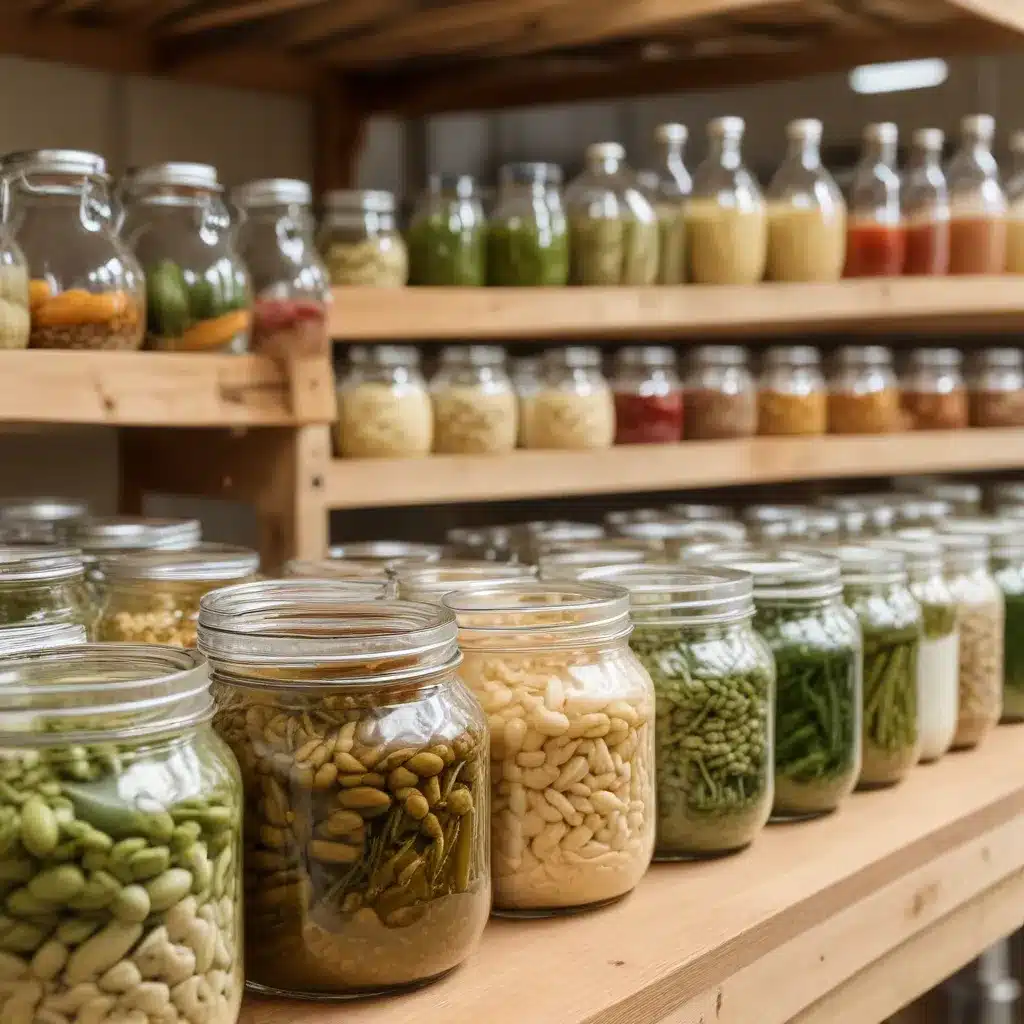
Unlocking the Power of Microbes in the Kitchen
For millennia, humans have harnessed the power of fermentation to transform ingredients and create a diverse array of flavorful, nutritious, and preserved foods. From sourdough bread and sauerkraut to miso and kimchi, the science of food fermentation has been a cornerstone of culinary traditions worldwide. As a seasoned culinary professional, I’m excited to share the fascinating insights and practical applications of this ancient, yet still widely misunderstood, food science.
The Microbial Alchemy of Fermentation
At the heart of food fermentation lies a dynamic interplay between microorganisms and their environment. When the right conditions are created, bacteria, yeasts, and even fungi begin to work their microbial magic, converting the complex sugars, starches, and proteins in our ingredients into a bounty of new and desirable compounds.
One of the most common and well-understood fermentation processes is the action of lactic acid bacteria (LAB). These hardy microbes thrive in environments with limited oxygen, high salinity, and an abundance of fermentable carbohydrates. As they metabolize these sugars, they produce lactic acid, which lowers the pH and creates the signature tangy, sour flavors we associate with fermented foods like sauerkraut, kimchi, and yogurt.
But lactic acid bacteria are just the beginning. Depending on the ingredients and conditions, a diverse array of other microbes may also participate, including acetic acid bacteria, which convert alcohol into vinegar, and various yeasts that produce carbon dioxide and alcohol. This microbial dance not only transforms the taste and texture of our foods but also unlocks valuable nutrients and health-promoting compounds.
Boosting Nutrition through Fermentation
Far from being simply a flavour enhancer, food fermentation can significantly improve the nutritional profile of our ingredients. By breaking down complex molecules, fermentation makes nutrients more bioavailable, meaning our bodies can more easily absorb and utilize them.
For example, many plant-based proteins, such as those found in legumes, cereals, and pseudocereals, can be difficult to digest due to the presence of antinutritional factors like phytates and tannins. Fermentation, however, can reduce or even eliminate these compounds, enhancing the digestibility of the protein and increasing the availability of essential amino acids.
Similarly, fermentation can improve the bioavailability of important micronutrients like iron, zinc, and B vitamins. The microbial activity during fermentation can break down the fiber and cell walls of plant materials, making these essential nutrients more accessible to our bodies.
Harnessing Fermentation for Food Safety
In addition to its nutritional benefits, food fermentation can also serve as a powerful tool for enhancing food safety. The acidic environment created by lactic acid bacteria inhibits the growth of pathogenic microorganisms, helping to preserve the food and prevent the risk of foodborne illnesses.
This is particularly important for plant-based ingredients, which can be more susceptible to contamination by harmful bacteria, such as Salmonella or E. coli. By carefully controlling the fermentation process, we can create a hostile environment for these pathogens, ensuring that the end product is not only delicious but also safe to consume.
Exploring the Diversity of Fermented Foods
The world of fermented foods is a vast and fascinating one, with countless regional and cultural variations. From the robust, umami-rich flavors of miso and soy sauce to the tangy tanginess of kimchi and pickles, each fermented food reflects the unique microbial communities and traditional practices of its place of origin.
As we delve deeper into the science of food fermentation, we’re also discovering the incredible diversity of microorganisms involved in these processes. By studying the specific bacteria, yeasts, and fungi present in different fermented foods, researchers are gaining valuable insights into the complex relationships between ingredients, environmental conditions, and the resulting flavors and nutritional profiles.
Mastering the Art of Fermentation at Home
One of the joys of food fermentation is that it’s an accessible practice that can be easily incorporated into the home kitchen. With a few basic tools, some patience, and a keen eye for detail, home cooks can unlock the transformative power of fermentation and create their own unique, artisanal products.
Whether you’re interested in fermenting vegetables, brewing kombucha, or crafting sourdough bread, the key is to understand the underlying principles of microbial activity and create the optimal conditions for your desired fermentation. This might involve carefully controlling temperature, adjusting salt levels, or monitoring the pH throughout the process.
As you delve into the world of food fermentation, remember to experiment, document your observations, and embrace the serendipity of working with living microorganisms. Each fermentation journey is unique, and the rewards of mastering this ancient culinary art can be truly transformative.
Harnessing the Power of Fermentation for a Sustainable Future
As we look to the future, the science of food fermentation holds immense potential for addressing some of the most pressing challenges facing our global food system. By leveraging the power of microbes to enhance the nutritional quality and safety of plant-based proteins, we can pave the way for a more sustainable and equitable food future.
Moreover, fermentation’s ability to preserve ingredients and extend their shelf-life aligns perfectly with the drive towards reducing food waste and minimizing our environmental impact. As we continue to explore the untapped potential of fermented foods, we may uncover new avenues for addressing hunger, improving global health, and fostering a more resilient food system.
Ultimately, the science of food fermentation is a testament to the incredible adaptability and resilience of the microbial world. By harnessing this ancient knowledge and collaborating with the invisible life that surrounds us, we can unlock new realms of culinary innovation and shape a more sustainable, nourishing, and delicious future.
So, let us embrace the microbial alchemy of fermentation and embark on a journey of culinary discovery, one flavorful bite at a time. The possibilities are endless, and the kitchen has never been more alive with the promise of transformation.


